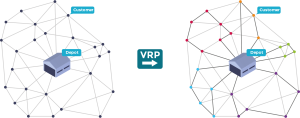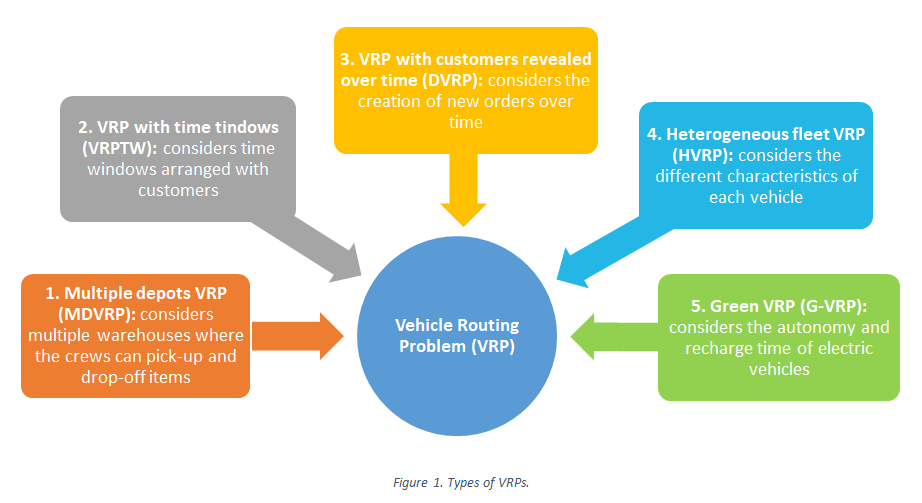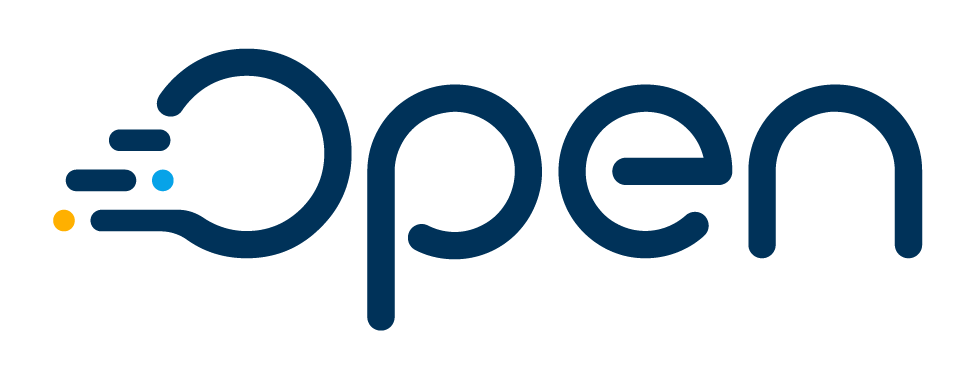Every company with field operations, including utilities, seeks to create the most efficient routes for their crew members to serve customers. Although there is no algorithm that can produce fully optimized results, different techniques have been created to develop more optimal solutions and have continued improving over the years.

Due to the frequency and nature of the interactions between service providers and their customers, every touchpoint should be satisfactory for them, improve their experience, and enhance their journey. A specific service event that should be a “wow moment” for customers is when technicians visit their homes to perform service-related activities. This is possible by performing small, but meaningful actions such as providing proactive notifications or more precise Estimated Times of Arrival (ETAs). These actions also facilitate the planning and management of the organization’s field operations and result in a more controlled and reliable process.
To accomplish these actions, utilities have used routing programs that now can process a lot of information, including, traffic, types of roads, along with the workload and availability of technicians. These algorithms have evolved over time becoming more intelligent and efficient by solving various routing problems:
1. Traveling Salesmen Problem (TSP)

In the 1800s, mathematicians Sir William Rowan Hamilton and Thomas Penyngton Kirkman formulated the problem: “Given a list of cities and the distances between each pair of cities, what is the shortest possible route to visit each city exactly once and return to the origin city”. Even though it was originally defined as a truck industry problem, it can be applied to solve several issues in the utility industry. In this case, the cities represent customers’ houses, the origin city is the starting point of a crew, and this particular crew must visit every house. Finding the shortest possible route gives an approximately optimized pathway for the technicians to follow in order to carry out all their workload.
2. The Truck Dispatching Problem (TDP)

One hundred years later, in 1959, George Dantzig and John Ramser formulated another routing problem: “What is the optimal set of routes for a fleet of vehicles to traverse in order to serve a given set of customers?” Proposed as a generalization for the TSP, it can be similarly applied in the utility industry but with a higher level of complexity. In this case, there are more houses to visit and more technicians available to do so. Hence, the route optimization is done on a larger scale for several crews to visit all and fulfill the entire workload.
3. The Vehicle Routing Problem (VRP)

From this point forward, the evolution of routing really took off. Beyond the previously formulated problems, VRPs take into account the fleet of vehicles and the number of work orders. With this, it optimizes the route for each vehicle to maximize the available resources.
There are different alternatives that VRPs offer to service providers:

Based on Figure 1, what would happen if a crew needed to pick up materials to perform a job, the crew visits were arranged based on the customers’ availability, and new work orders were created after the technicians were on the field?
In this common situation, would consider the pick-up of materials, the VRPTW would take the time windows into account, and the DVRP would consider the new orders. Each type of VRP offers utilities different benefits, such as providing technicians with the right material to perform specific field service activities, enabling crews to arrive at their destination at the adequate time, and commuting more efficiently to cover the whole workload.
In contrast, an HVRP can include vehicles’ characteristics into the route optimization. G-VRPs take other relevant factors into account, like the recharge time of electric vehicles to obtain the optimized routes for the crews. These VRPs give utilities more flexibility when it comes to choosing the types of vehicles to use in their fleet.
Levels of precision of routing solutions
Even though solutions to the problems described above were optimal and efficient, they did not take into account how realistic the road actually is from one point to another. Therefore, algorithms needed to have additional inputs that result in a more feasible map model to improve the accuracy with which the solution predicts the ETAs. This accuracy is represented in three levels of precision available for organizations:
| As-the-Crow-Flies |
Street-level Routing |
Time-based Routing |
 Also known as Euclidean distance, this technique provides the lowest level of accuracy since it does not consider obstacles like buildings or rivers between destinations.
Also known as Euclidean distance, this technique provides the lowest level of accuracy since it does not consider obstacles like buildings or rivers between destinations. |
 This technique produces better results than the Euclidean counterpart does by considering turn-by-turn directions based on streets.
This technique produces better results than the Euclidean counterpart does by considering turn-by-turn directions based on streets. |
 This is the most accurate method available today. It takes into account traffic information, which allows this technique to produce extremely precise ETAs.
This is the most accurate method available today. It takes into account traffic information, which allows this technique to produce extremely precise ETAs. |
Intelligent Routing
So, what exactly is Intelligent Routing? It all comes down to producing the best possible routes with the VRP solution, that best fits the organization’s needs and pairing it with the highest level of precision. However, it is important to consider that more precision can mean a costlier solution, mainly because the map sellers that are capable of offering traffic information tend to charge a premium amount each time this information is required.
Therefore, it is up to each utility to decide how precise they want their operation to be. When it comes to intelligent routing, service providers must outsmart the bells and whistles of many sellers that claim to provide the best routing solution. In order to make a choice between the different alternatives presented, utilities need to consider their company’s needs, the size of its operation, and the budget they are willing to dedicate to optimizing their routes.
 Due to the frequency and nature of the interactions between service providers and their customers, every touchpoint should be satisfactory for them, improve their experience, and enhance their journey. A specific service event that should be a “wow moment” for customers is when technicians visit their homes to perform service-related activities. This is possible by performing small, but meaningful actions such as providing proactive notifications or more precise Estimated Times of Arrival (ETAs). These actions also facilitate the planning and management of the organization’s field operations and result in a more controlled and reliable process.
To accomplish these actions, utilities have used routing programs that now can process a lot of information, including, traffic, types of roads, along with the workload and availability of technicians. These algorithms have evolved over time becoming more intelligent and efficient by solving various routing problems:
Due to the frequency and nature of the interactions between service providers and their customers, every touchpoint should be satisfactory for them, improve their experience, and enhance their journey. A specific service event that should be a “wow moment” for customers is when technicians visit their homes to perform service-related activities. This is possible by performing small, but meaningful actions such as providing proactive notifications or more precise Estimated Times of Arrival (ETAs). These actions also facilitate the planning and management of the organization’s field operations and result in a more controlled and reliable process.
To accomplish these actions, utilities have used routing programs that now can process a lot of information, including, traffic, types of roads, along with the workload and availability of technicians. These algorithms have evolved over time becoming more intelligent and efficient by solving various routing problems:
 In the 1800s, mathematicians Sir William Rowan Hamilton and Thomas Penyngton Kirkman formulated the problem: “Given a list of cities and the distances between each pair of cities, what is the shortest possible route to visit each city exactly once and return to the origin city”. Even though it was originally defined as a truck industry problem, it can be applied to solve several issues in the utility industry. In this case, the cities represent customers’ houses, the origin city is the starting point of a crew, and this particular crew must visit every house. Finding the shortest possible route gives an approximately optimized pathway for the technicians to follow in order to carry out all their workload.
In the 1800s, mathematicians Sir William Rowan Hamilton and Thomas Penyngton Kirkman formulated the problem: “Given a list of cities and the distances between each pair of cities, what is the shortest possible route to visit each city exactly once and return to the origin city”. Even though it was originally defined as a truck industry problem, it can be applied to solve several issues in the utility industry. In this case, the cities represent customers’ houses, the origin city is the starting point of a crew, and this particular crew must visit every house. Finding the shortest possible route gives an approximately optimized pathway for the technicians to follow in order to carry out all their workload.
 One hundred years later, in 1959, George Dantzig and John Ramser formulated another routing problem: “What is the optimal set of routes for a fleet of vehicles to traverse in order to serve a given set of customers?” Proposed as a generalization for the TSP, it can be similarly applied in the utility industry but with a higher level of complexity. In this case, there are more houses to visit and more technicians available to do so. Hence, the route optimization is done on a larger scale for several crews to visit all and fulfill the entire workload.
One hundred years later, in 1959, George Dantzig and John Ramser formulated another routing problem: “What is the optimal set of routes for a fleet of vehicles to traverse in order to serve a given set of customers?” Proposed as a generalization for the TSP, it can be similarly applied in the utility industry but with a higher level of complexity. In this case, there are more houses to visit and more technicians available to do so. Hence, the route optimization is done on a larger scale for several crews to visit all and fulfill the entire workload.
 From this point forward, the evolution of routing really took off. Beyond the previously formulated problems, VRPs take into account the fleet of vehicles and the number of work orders. With this, it optimizes the route for each vehicle to maximize the available resources.
There are different alternatives that VRPs offer to service providers:
From this point forward, the evolution of routing really took off. Beyond the previously formulated problems, VRPs take into account the fleet of vehicles and the number of work orders. With this, it optimizes the route for each vehicle to maximize the available resources.
There are different alternatives that VRPs offer to service providers:
 Based on Figure 1, what would happen if a crew needed to pick up materials to perform a job, the crew visits were arranged based on the customers’ availability, and new work orders were created after the technicians were on the field?
In this common situation, would consider the pick-up of materials, the VRPTW would take the time windows into account, and the DVRP would consider the new orders. Each type of VRP offers utilities different benefits, such as providing technicians with the right material to perform specific field service activities, enabling crews to arrive at their destination at the adequate time, and commuting more efficiently to cover the whole workload.
In contrast, an HVRP can include vehicles’ characteristics into the route optimization. G-VRPs take other relevant factors into account, like the recharge time of electric vehicles to obtain the optimized routes for the crews. These VRPs give utilities more flexibility when it comes to choosing the types of vehicles to use in their fleet.
Based on Figure 1, what would happen if a crew needed to pick up materials to perform a job, the crew visits were arranged based on the customers’ availability, and new work orders were created after the technicians were on the field?
In this common situation, would consider the pick-up of materials, the VRPTW would take the time windows into account, and the DVRP would consider the new orders. Each type of VRP offers utilities different benefits, such as providing technicians with the right material to perform specific field service activities, enabling crews to arrive at their destination at the adequate time, and commuting more efficiently to cover the whole workload.
In contrast, an HVRP can include vehicles’ characteristics into the route optimization. G-VRPs take other relevant factors into account, like the recharge time of electric vehicles to obtain the optimized routes for the crews. These VRPs give utilities more flexibility when it comes to choosing the types of vehicles to use in their fleet.
 Also known as Euclidean distance, this technique provides the lowest level of accuracy since it does not consider obstacles like buildings or rivers between destinations.
Also known as Euclidean distance, this technique provides the lowest level of accuracy since it does not consider obstacles like buildings or rivers between destinations. This technique produces better results than the Euclidean counterpart does by considering turn-by-turn directions based on streets.
This technique produces better results than the Euclidean counterpart does by considering turn-by-turn directions based on streets. This is the most accurate method available today. It takes into account traffic information, which allows this technique to produce extremely precise ETAs.
This is the most accurate method available today. It takes into account traffic information, which allows this technique to produce extremely precise ETAs.






